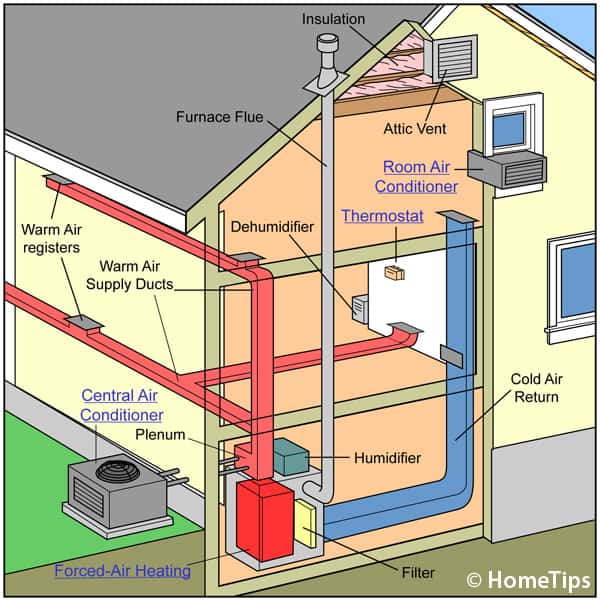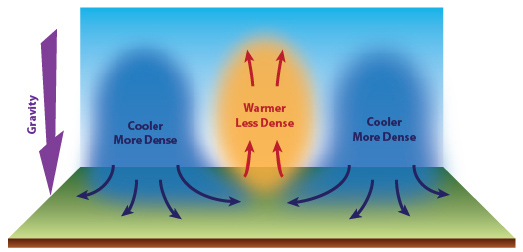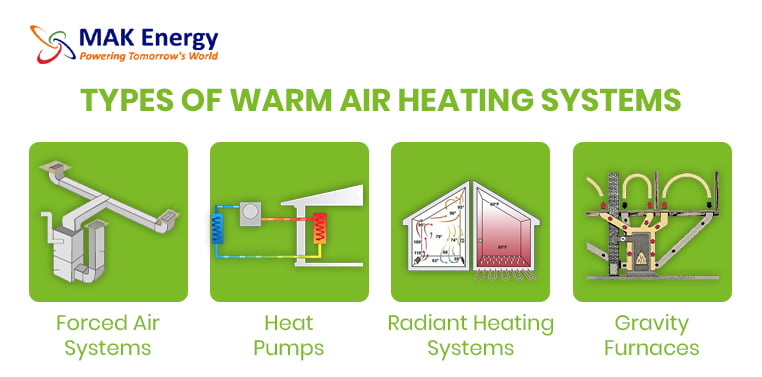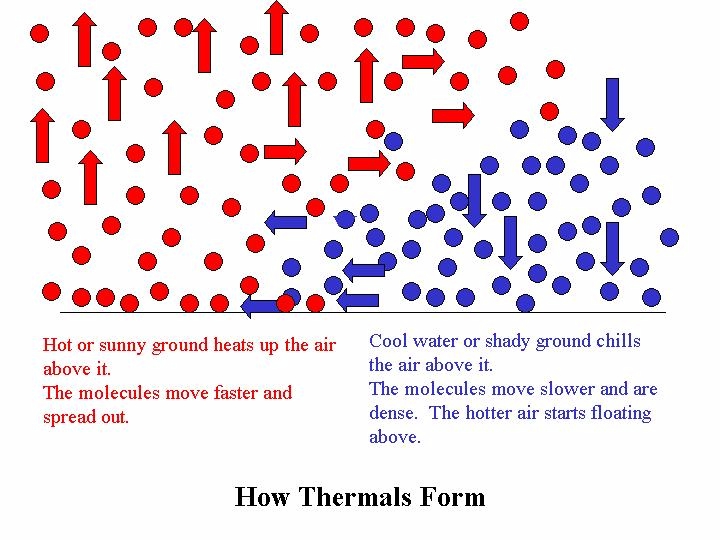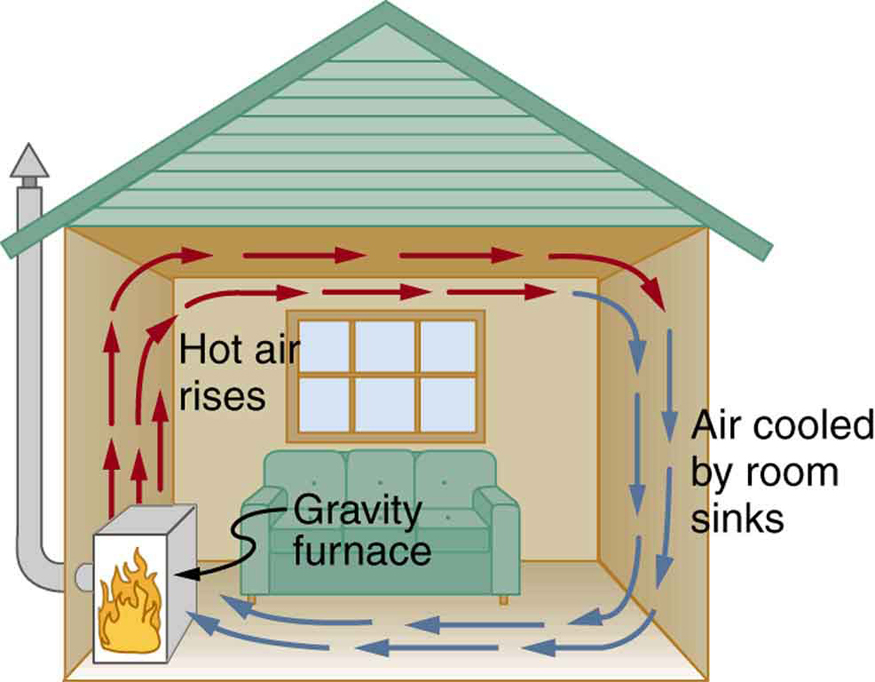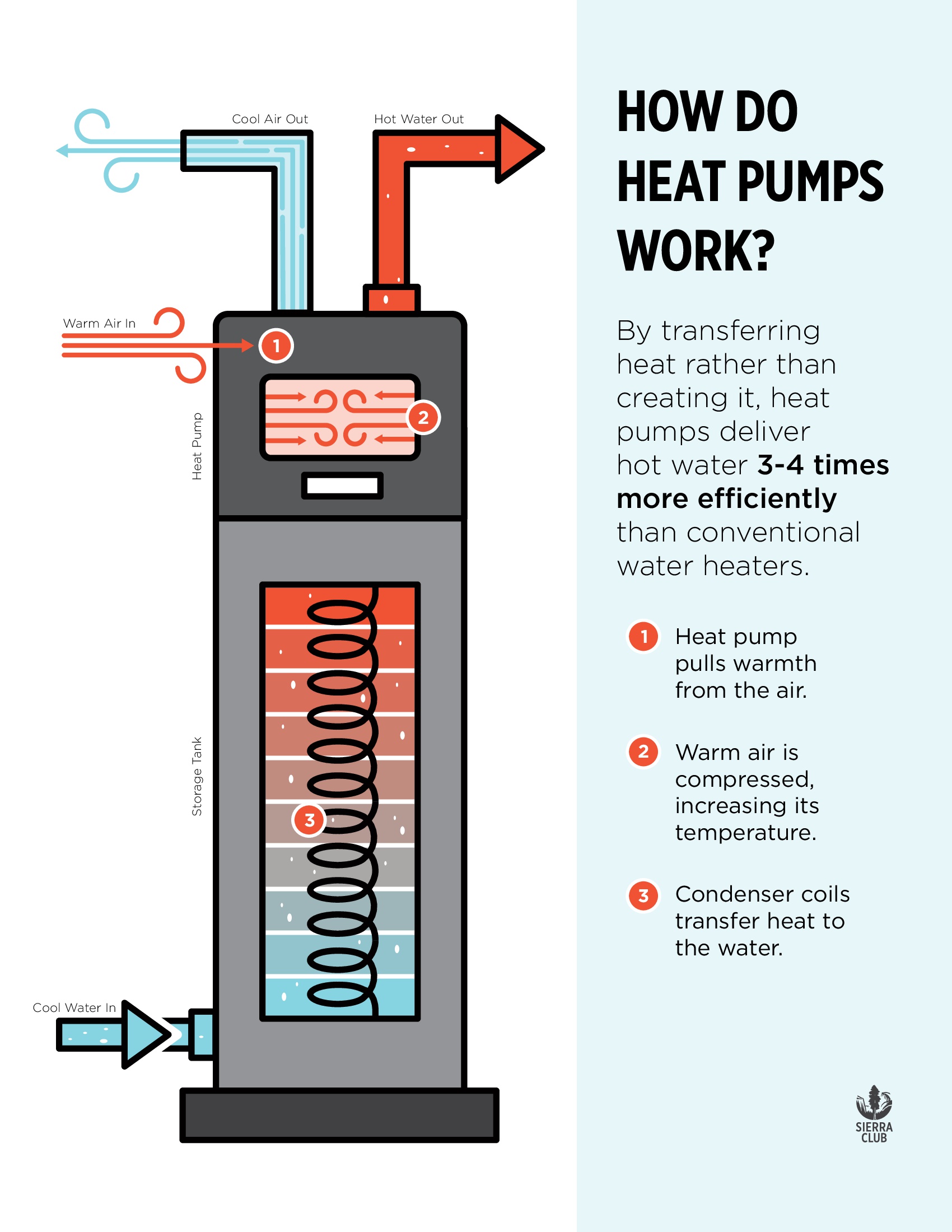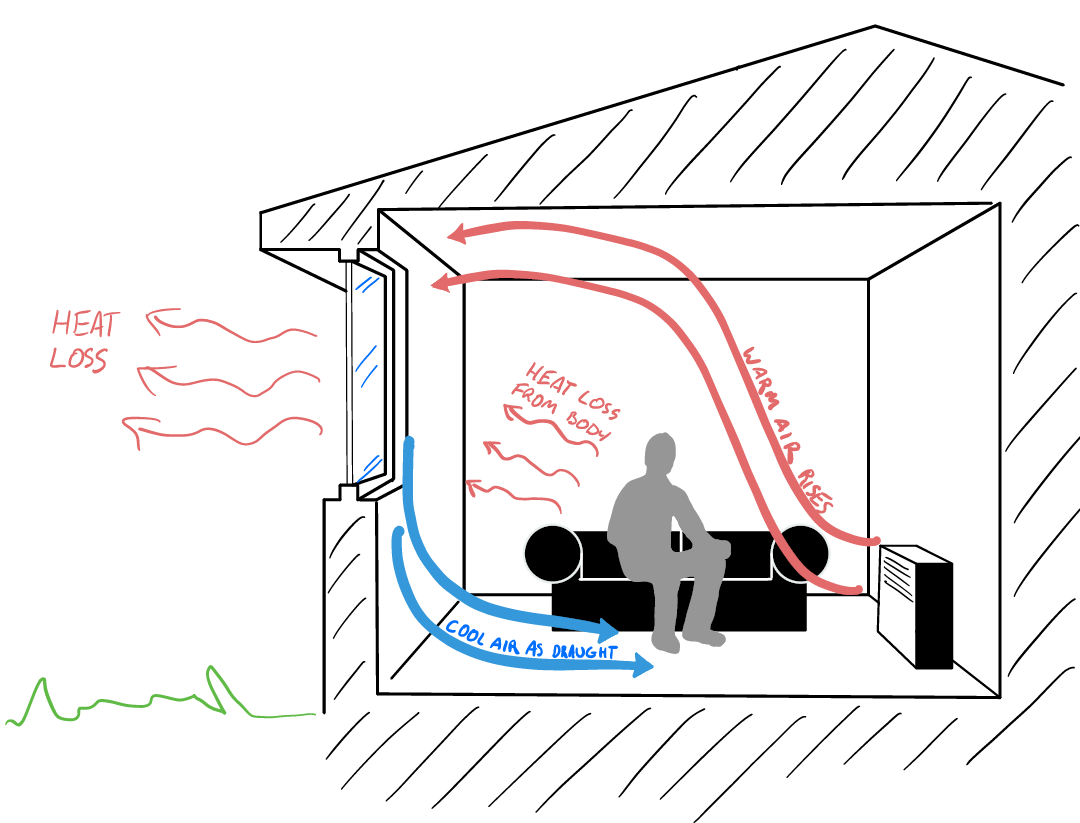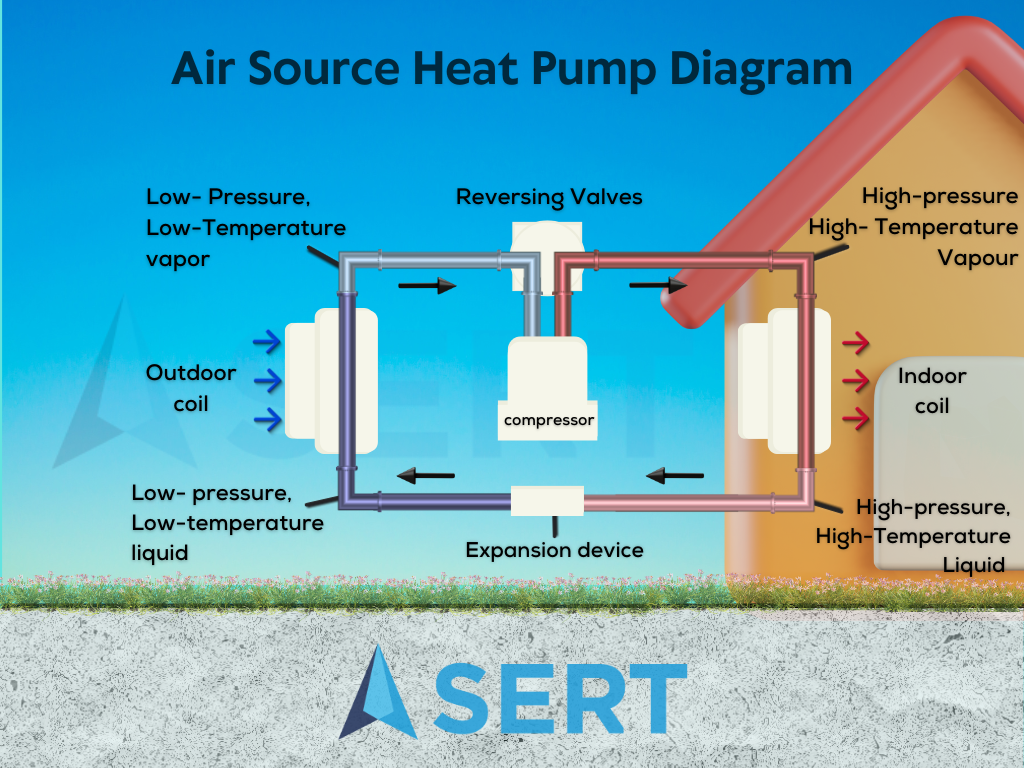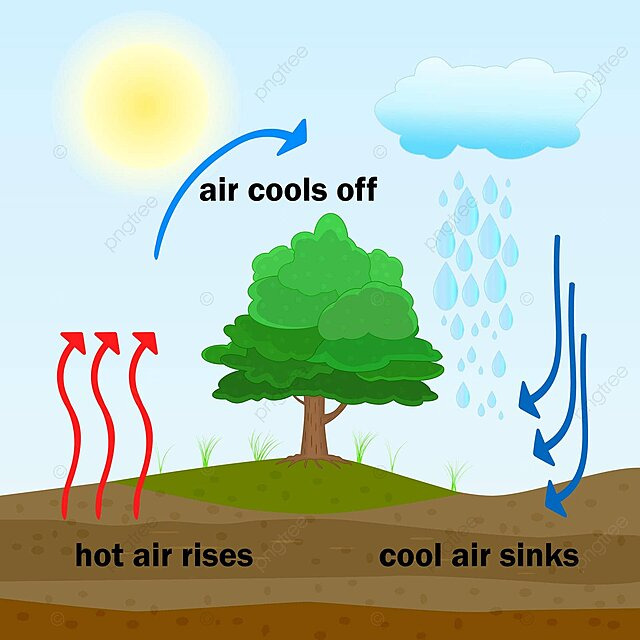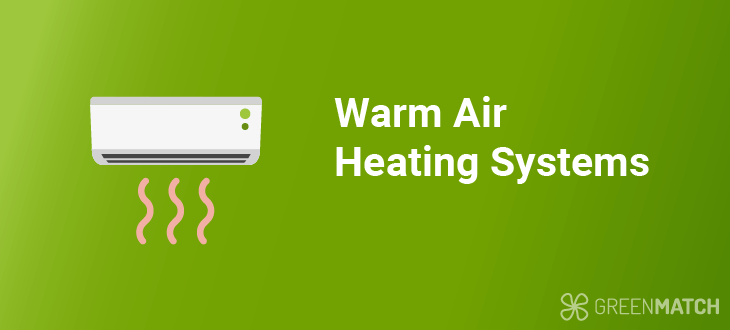Heat Delivered In Warm Air Is Accomplished By
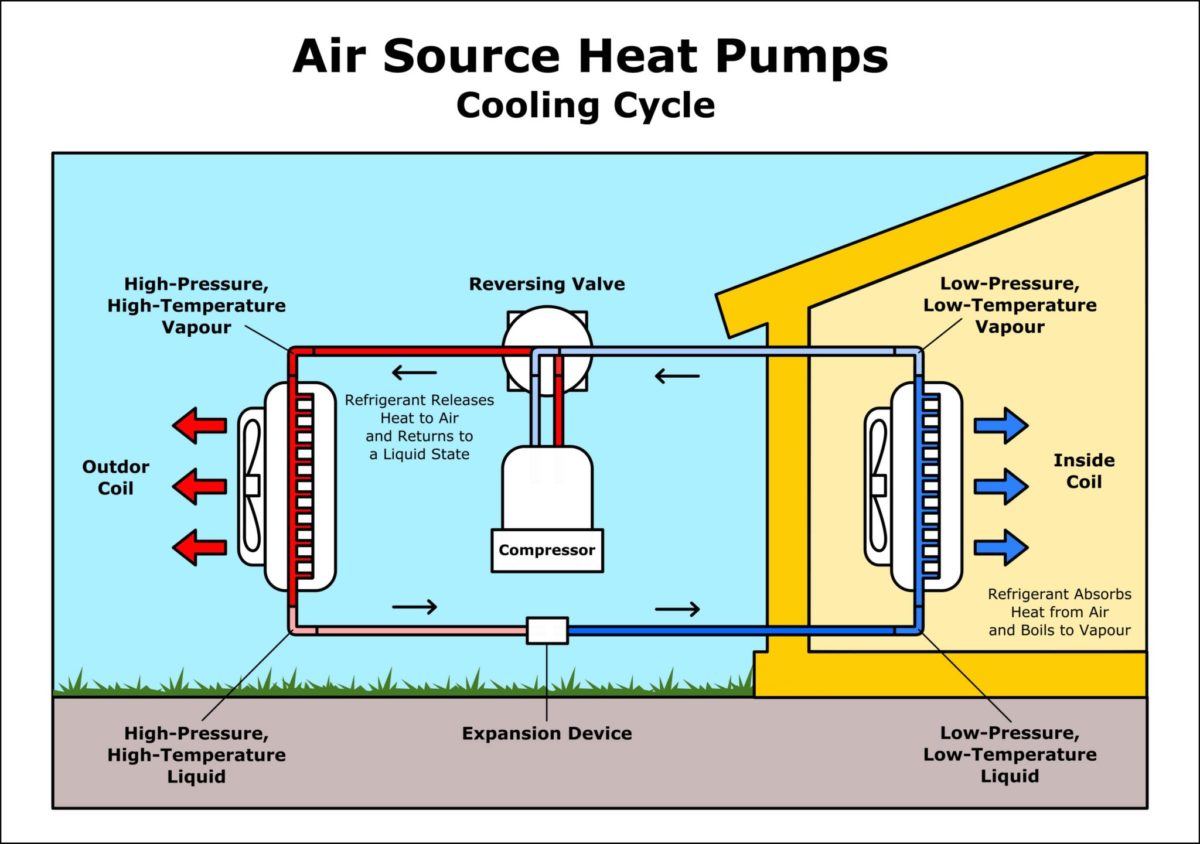
Imagine stepping indoors on a crisp winter's day, the chill clinging to your coat. A wave of gentle warmth washes over you, chasing away the cold and inviting you to relax. This comforting embrace, so often taken for granted, is a testament to the ingenuity of harnessing the power of warm air to deliver heat.
The fundamental principle behind this process, often referred to as convection, is deceptively simple yet remarkably effective. Heat delivered in warm air is accomplished by the movement of heated air, transferring thermal energy from a source to the surrounding environment, thereby raising its temperature.
The Science of Convection: A Deep Dive
To fully appreciate how warm air effectively delivers heat, understanding the physics of convection is crucial. Convection is one of the three primary modes of heat transfer, alongside conduction and radiation. It's the mechanism by which heat moves through fluids – liquids and gases – due to differences in density.
When air is heated, its molecules gain kinetic energy, causing them to move faster and further apart. This expansion makes the warm air less dense than the surrounding cooler air. Buoyancy then comes into play, as the less dense warm air rises, displacing the cooler, denser air, which sinks to take its place.
This continuous cycle of rising warm air and sinking cool air creates what's known as a convection current. It's these currents that effectively circulate heat throughout a space, ensuring that the warmth is distributed evenly, rather than being concentrated in one spot. This is supported by many scientific experiments and data from organizations such as the National Weather Service.
Historical Roots and Modern Applications
The utilization of warm air for heating has a long and fascinating history. Ancient civilizations, like the Romans, employed rudimentary forms of central heating using hypocaust systems. These systems channeled warm air from a furnace under the floors of buildings, providing a comfortable living environment even during harsh winters.
Fast forward to the modern era, and warm air heating systems have undergone significant advancements. Forced-air systems, commonly found in homes and businesses, utilize a furnace to heat air. This heated air is then propelled through a network of ducts by a fan or blower, distributing warmth to various rooms via vents.
These systems are often coupled with thermostats, which regulate the temperature by controlling the furnace's operation. When the temperature drops below the set point, the thermostat signals the furnace to ignite, producing warm air. Once the desired temperature is reached, the furnace shuts off, conserving energy. According to the U.S. Department of Energy, modern high-efficiency furnaces can achieve Annual Fuel Utilization Efficiency (AFUE) ratings of 90% or higher, meaning that they convert a significant portion of the fuel they burn into usable heat.
Beyond Residential Heating: Industrial and Specialized Uses
The applications of warm air heating extend far beyond residential comfort. In industrial settings, warm air is used for a variety of processes, including drying materials, curing coatings, and providing space heating for large warehouses and factories. The precise control of temperature and airflow offered by these systems is crucial for maintaining product quality and ensuring worker safety.
Furthermore, warm air plays a vital role in specialized applications such as crop drying and climate control in greenhouses. By carefully regulating the temperature and humidity of the air, farmers can optimize growing conditions, extend the growing season, and protect crops from frost and disease.
A great example is in food processing, where warm air is used in ovens for baking and drying. The even distribution of heat provided by convection ensures that food is cooked uniformly, preventing hot spots and ensuring consistent quality. This is backed by food science research and application across various industries.
Efficiency and Sustainability: A Focus on the Future
As energy efficiency and environmental sustainability become increasingly important, ongoing research and development efforts are focused on improving warm air heating systems. Innovations include the use of variable-speed blowers, which can adjust the airflow based on heating demand, and the integration of renewable energy sources such as solar thermal collectors.
Geothermal heat pumps, which utilize the earth's relatively constant temperature to heat and cool buildings, are another promising technology. These systems can extract heat from the ground during the winter and transfer it indoors via a warm air distribution system, providing a sustainable and energy-efficient heating solution. This data comes from the EPA and other environmental protection agencies.
Moreover, advancements in insulation materials and building design are helping to reduce heat loss, further minimizing the energy required to maintain a comfortable indoor environment. Smart thermostats, which can learn user preferences and adjust heating schedules accordingly, also contribute to energy savings.
"The future of warm air heating lies in optimizing efficiency, reducing emissions, and integrating renewable energy sources." - Energy Efficiency & Renewable Energy, U.S. Department of Energy
Conclusion: The Enduring Appeal of Warm Air
The simple act of warming our homes with air, a method that has been refined over centuries, highlights our ongoing pursuit of comfort and efficiency. From the ancient hypocausts to the sophisticated forced-air systems of today, the principle of convection remains a cornerstone of heating technology.
As we continue to innovate and embrace sustainable solutions, the role of warm air in delivering heat will undoubtedly evolve. However, the fundamental appeal of that comforting wave of warmth on a chilly day will endure, reminding us of the power of simple physics and human ingenuity. The legacy of convection and warm air as a deliverer of warmth is far from over.
